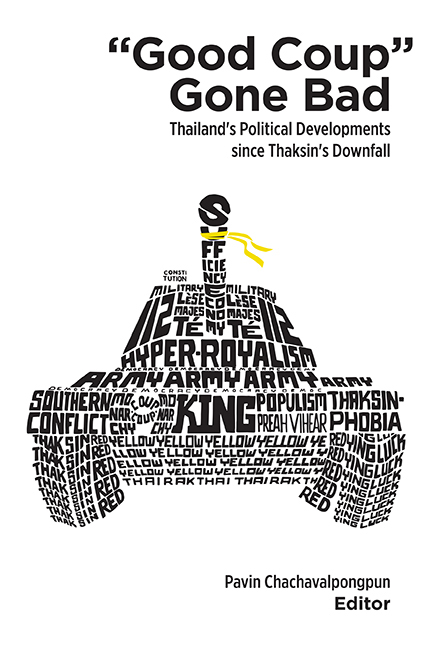Book contents
- Frontmatter
- Contents
- List of Tables and Figures
- Foreword
- Contributors
- Abbreviations
- Section I The 2006 Military Coup: Impact on the Thai Political Landscape
- Section II Defending the Old Political Consensus: The Military and the Monarchy
- Section III New Political Discourses and the Emergence of Yellows and Reds
- 6 “Vote No!”: The PAD's Decline from Powerful Movement to Political Sect?
- 7 The Red Shirts: From Anti-Coup Protesters to Social Mass Movement
- 8 Is Peasant Politics in Thailand Civil?
- Section IV Crises of Legitimacy
- Index
- Plate Section
7 - The Red Shirts: From Anti-Coup Protesters to Social Mass Movement
from Section III - New Political Discourses and the Emergence of Yellows and Reds
Published online by Cambridge University Press: 21 October 2015
- Frontmatter
- Contents
- List of Tables and Figures
- Foreword
- Contributors
- Abbreviations
- Section I The 2006 Military Coup: Impact on the Thai Political Landscape
- Section II Defending the Old Political Consensus: The Military and the Monarchy
- Section III New Political Discourses and the Emergence of Yellows and Reds
- 6 “Vote No!”: The PAD's Decline from Powerful Movement to Political Sect?
- 7 The Red Shirts: From Anti-Coup Protesters to Social Mass Movement
- 8 Is Peasant Politics in Thailand Civil?
- Section IV Crises of Legitimacy
- Index
- Plate Section
Summary
The continuing political conflict between forces in favour and against then Prime Minister Thaksin Shinawatra that became visible in late 2005 has led to fundamental changes in Thai politics and society. When Sondhi Limthongkul started his protests against the Thaksin government, which were followed by the founding of the ultra-royalist People's Alliance for Democracy (PAD) in early 2006, and their mass protests over the following months, very few observers could have imagined that the supporters of Thaksin would transform themselves from passive voters into possibly the biggest social mass movement Thailand has ever seen — the redshirt movement, born out of the 19 September 2006 military coup. This transformation took place in four distinct phases of development, which were closely connected to developments at the street level. While most commentators view the turmoil as an elite conflict, especially between Thaksin/new money and the military/bureaucracy/palace conglomerate, this article argues that the driving force of the socio-political turmoil is indeed at the street level. Even though the elite level conflict may have initiated this crisis, it had over time become more reactive to ground level developments, based on the collective experience of ordinary protesters and the increase in their political awareness. This also means that the ongoing conflict is not just a power conflict between two opposing elite factions, but has developed into a historical identity crisis over two opposing philosophies represented by the colour codes of yellow — the old style Thai system of semi-or managed democracy with the role of ordinary people as subjects, and red — the demand to be citizens in a modern democratic system.
While unsolved political conflicts of the past — the 1932 abolition of the absolute monarchy and in particular the turmoil of the 1970s — can be seen as the root causes of the present conflict, also as many leading figures of the different sides then in the 1970s still play large roles today, the focus of this article is primarily on the effects of the 2006 military coup, and especially on how it altered the perceptions of the red shirts and their view of society.
- Type
- Chapter
- Information
- Good Coup Gone BadThailand's Political Development since Thaksin's Downfall, pp. 170 - 198Publisher: ISEAS–Yusof Ishak InstitutePrint publication year: 2014

